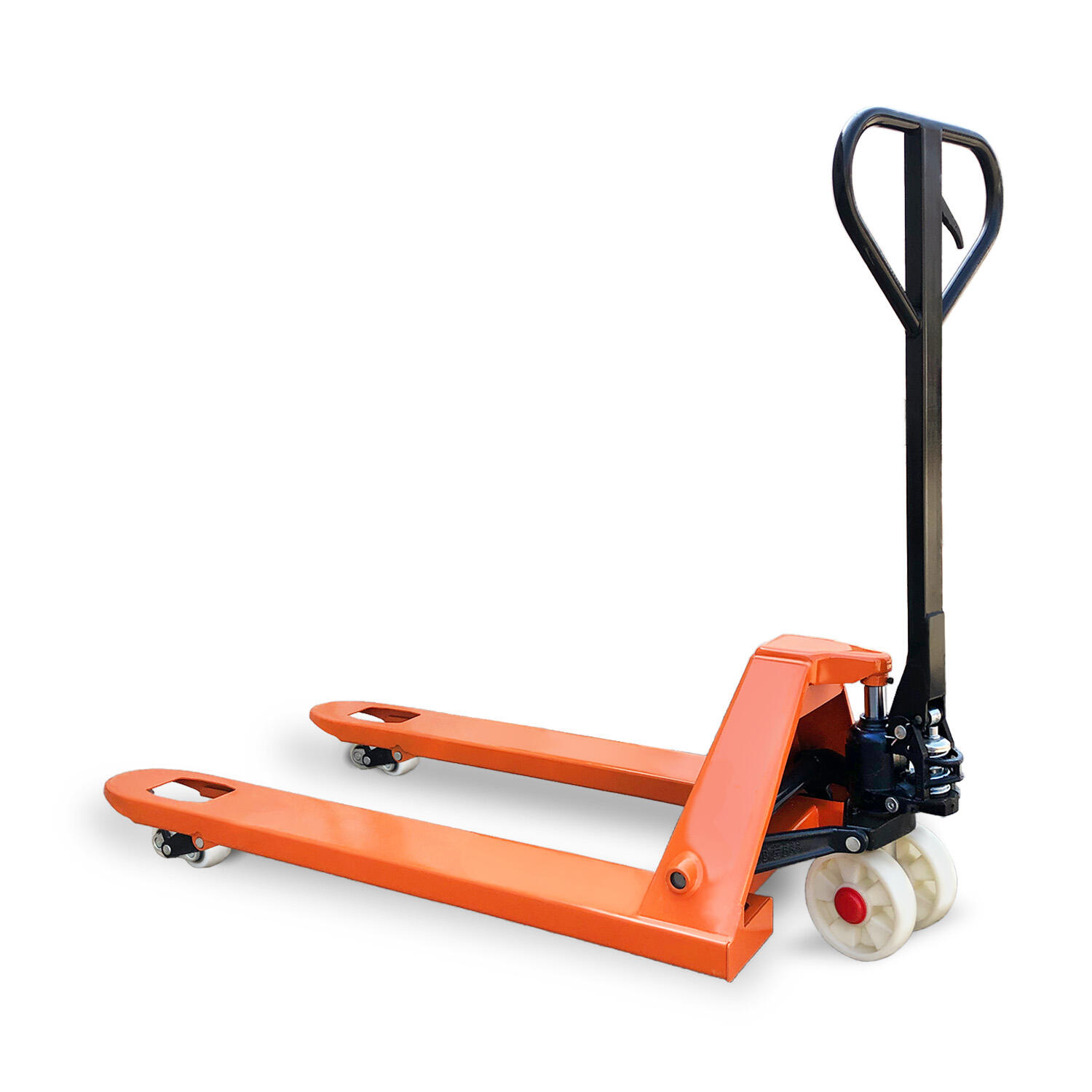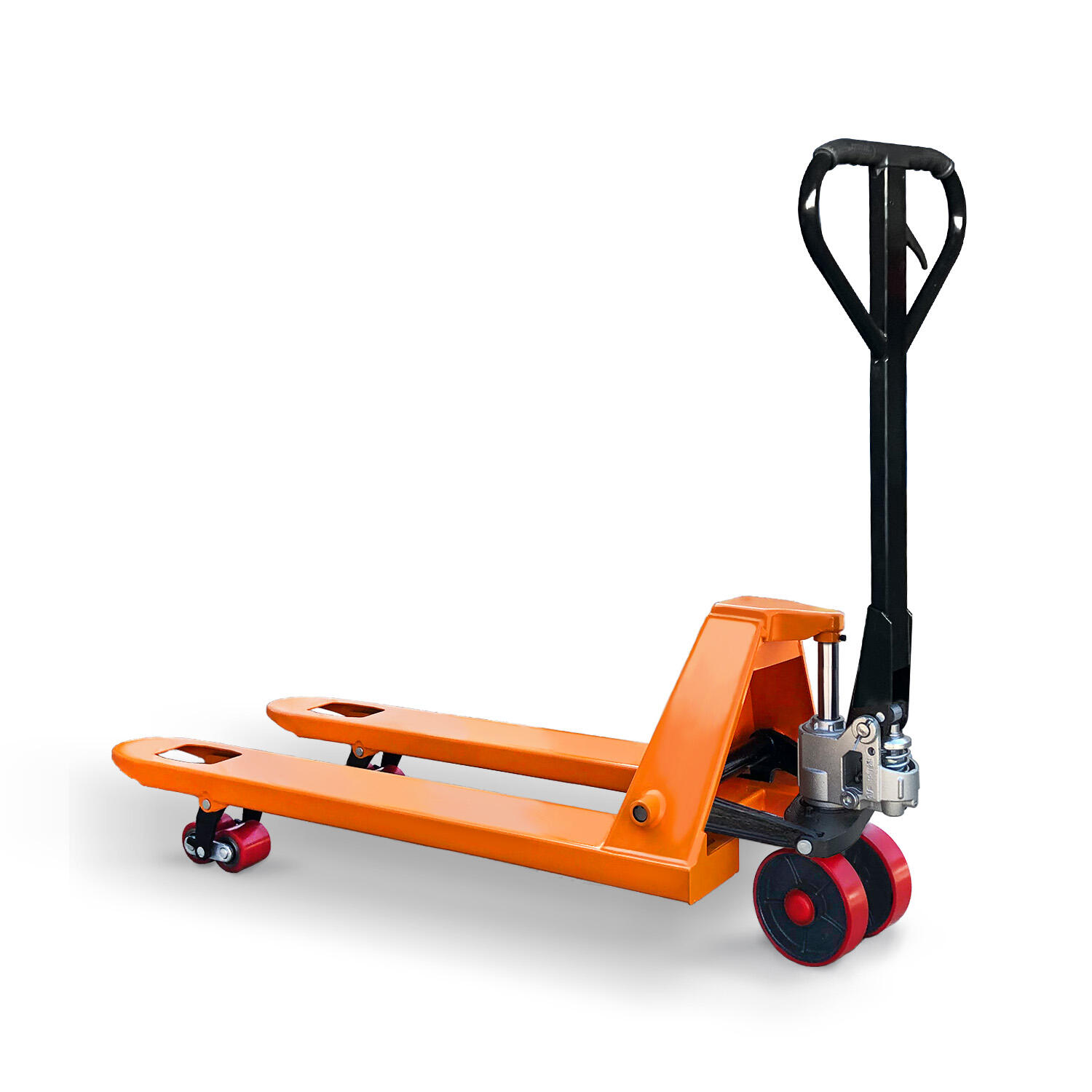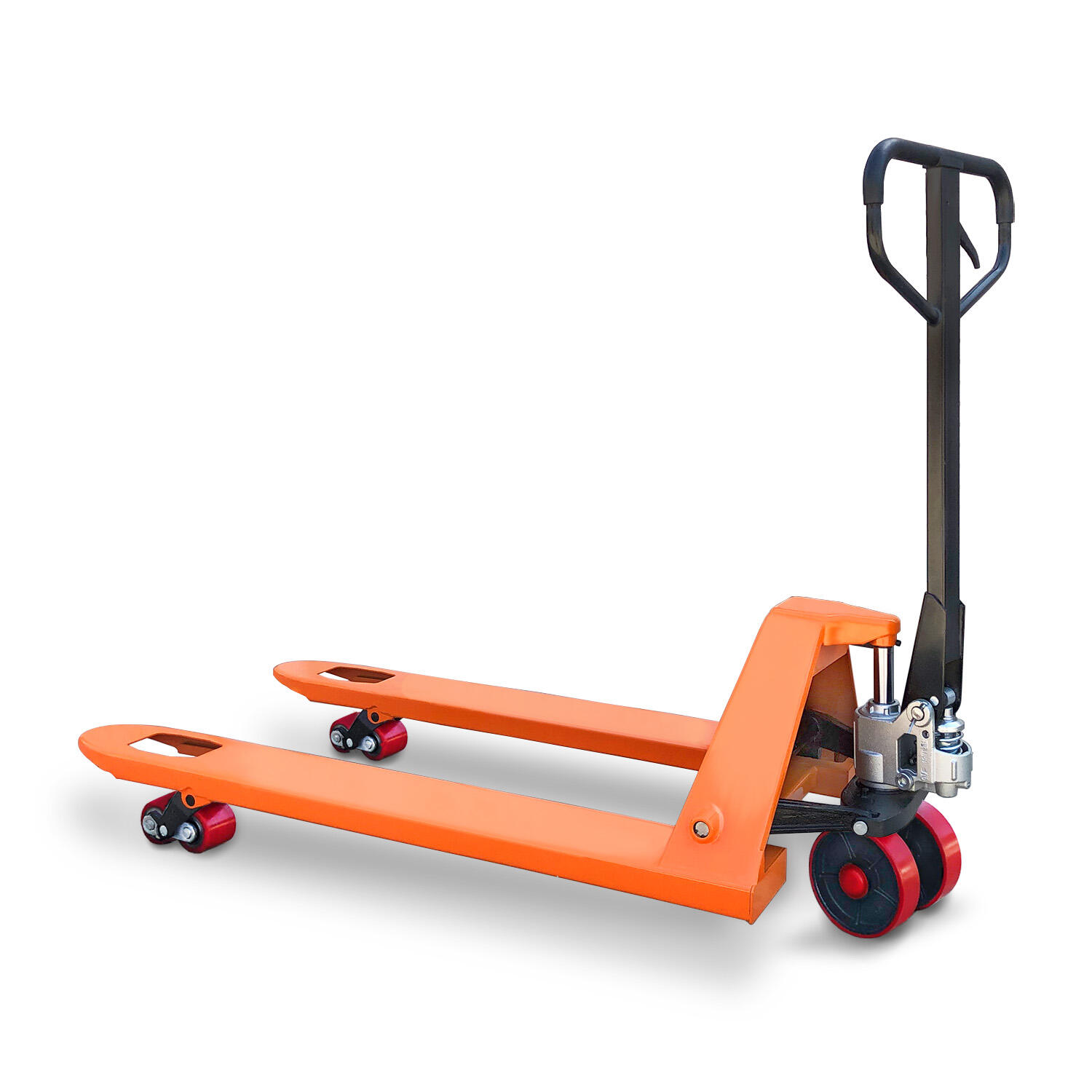A hand pallet jack is a fundamental piece of equipment in material handling, designed to lift and transport palletized goods with manual operation, making it a staple in warehouses, retail stores, manufacturing facilities, and logistics centers. Its simple yet effective design offers a cost-efficient and reliable solution for moving heavy loads, eliminating the need for power sources and reducing physical strain on operators. With a focus on durability, maneuverability, and safety, the hand pallet jack has become an essential tool for businesses of all sizes, streamlining daily operations and enhancing overall productivity. The construction of a hand pallet jack is centered around a robust steel frame that provides the strength to support heavy loads, typically ranging from 1,000 kg to 2,500 kg. This frame is engineered to withstand the rigors of daily use, including frequent lifting, pushing, and maneuvering over various surfaces. The forks, which are integral to the hand pallet jack, are made from high-grade steel, designed to slide smoothly under pallets and remain sturdy even when carrying heavy weights. The forks are usually spaced to fit standard pallet sizes, but some models offer adjustable widths to accommodate different pallet dimensions, enhancing their versatility. The lifting mechanism of a hand pallet jack is powered by a hydraulic system operated via a hand pump. By pumping the handle, the hydraulic fluid is pressurized, raising the forks to a height sufficient to clear the ground—typically a few centimeters—allowing the pallet to be moved easily. This manual operation ensures that the hand pallet jack can be used in areas without electricity, such as outdoor loading docks or remote construction sites. The hydraulic system is designed to be reliable, with sealed components to prevent leaks and ensure smooth lifting and lowering of loads. Maneuverability is a key feature of a hand pallet jack, thanks to its compact design and efficient wheel system. It is equipped with four wheels: two swivel casters at the front for easy turning and two fixed wheels at the rear for stability. The wheels are made from durable materials such as polyurethane or rubber, which provide a smooth ride over concrete, asphalt, and other surfaces while minimizing noise and preventing floor damage. This allows operators to navigate through narrow aisles, tight corners, and crowded spaces with precision, making it ideal for use in busy warehouses and retail environments. Ergonomics plays a crucial role in the design of a hand pallet jack, ensuring operator comfort during extended use. The handle is ergonomically shaped with a non-slip grip, reducing hand and wrist fatigue. It is positioned at a height that allows operators to stand upright, avoiding bending or stooping that could lead to back injuries. The pumping action required to lift the load is designed to be efficient, requiring minimal effort to achieve maximum lifting power. Some models feature a foldable handle, making storage more convenient when the jack is not in use. Safety features are integrated into the hand pallet jack to protect operators and goods. A lowering valve allows for controlled descent of the forks, preventing sudden drops that could damage the load or cause the jack to tip. Many models include a parking brake that secures the jack in place when loading or unloading, preventing accidental movement. The sturdy frame and wide base provide stability, even when carrying uneven loads, reducing the risk of tipping. Additionally, the forks are designed with rounded edges to avoid damaging pallets or goods during handling. Maintenance of a hand pallet jack is straightforward, ensuring long-term reliability and performance. Regular maintenance tasks include checking the hydraulic fluid level and topping it up if necessary, inspecting the hydraulic hoses and seals for leaks, and lubricating moving parts such as wheel bearings and pivot points. Cleaning the jack regularly to remove dirt, debris, and moisture helps prevent rust and corrosion. Unlike powered equipment, there are no electrical components to maintain, reducing the need for specialized tools or professional servicing. The applications of a hand pallet jack are diverse, making it a versatile tool across industries. In warehouses, it is used to move pallets between storage racks, loading docks, and sorting areas. In retail, it assists in restocking shelves from storage rooms, allowing staff to efficiently transport merchandise. In manufacturing, it moves raw materials to production lines and finished products to storage or shipping areas. It is also useful in logistics for loading and unloading trucks, as it can easily maneuver within the limited space of a truck bed. Its portability and lack of power requirements make it suitable for use in outdoor settings, such as construction sites or agricultural facilities. Cost-effectiveness is a significant advantage of a hand pallet jack. It has a lower initial purchase price compared to electric or powered alternatives, making it accessible to small businesses and startups. With no ongoing costs for electricity, batteries, or fuel, it is also cheaper to operate. Its durability and low maintenance requirements further reduce long-term expenses, providing excellent value for money. For businesses with moderate material handling needs, a hand pallet jack offers an efficient solution that does not compromise on performance. In conclusion, a hand pallet jack is an indispensable tool for efficient and safe material handling. Its robust construction, reliable hydraulic system, ergonomic design, and ease of maintenance make it a valuable asset for businesses seeking to improve productivity and reduce workplace injuries. Whether used in a large warehouse or a small retail store, it delivers consistent performance, proving its role as a fundamental piece of equipment in modern logistics and operations.


